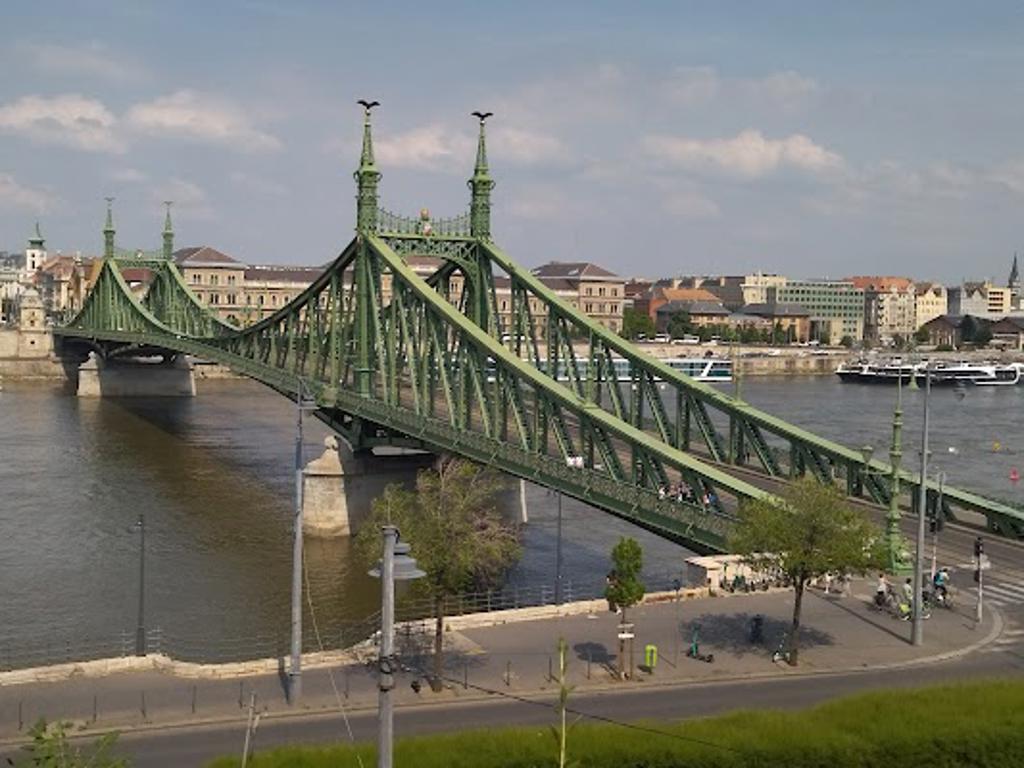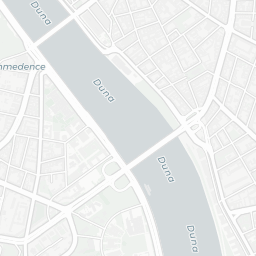About Liberty Bridge
Green steel spans stretch across the Danube, connecting Buda and Pest with elegance and strength. The Liberty Bridge, adorned with intricate rivets and decorative elements, stands as a masterpiece of late 19th-century engineering. Atop its towering pylons, gilded Turul birds—symbols of Hungarian mythology—spread their wings, watching over the city. The bridge’s latticework design creates a striking visual harmony, blending functionality with artistry.
Completed in 1896 for Hungary’s Millennium celebrations, the Liberty Bridge was originally named Franz Joseph Bridge after the Austro-Hungarian emperor. It was designed by János Feketeházy, a renowned Hungarian engineer, and quickly became a vital link between the Great Market Hall on the Pest side and Gellért Hill on the Buda side. Though damaged during World War II, the bridge was meticulously restored, preserving its original charm while symbolizing resilience and unity.
Architectural Elegance
The bridge’s Art Nouveau style is evident in its ornate details. Notice the curved lines and floral motifs that soften the industrial steel structure. The Turul birds, perched atop the pylons, are not just decorative; they represent Hungary’s ancient heritage and the strength of its people. The green paint enhances the bridge’s connection to the natural surroundings, blending seamlessly with the Danube and the hills beyond.
Plan your perfect trip to Budapest with Travo! Download now and start exploring.
Historical Significance
Built during a time of national pride, the Liberty Bridge was part of Hungary’s efforts to showcase its progress and culture during the Millennium celebrations. Its original name honored Emperor Franz Joseph, who attended the opening ceremony. After World War II, the bridge was renamed Liberty Bridge to reflect Hungary’s aspirations for freedom and independence. Today, it serves as a reminder of the country’s turbulent history and enduring spirit.
Living Connection
The Liberty Bridge is more than a transportation route; it’s a gathering place for locals and visitors alike. On summer evenings, people often sit on its railings, enjoying the view of the Danube and the city lights. Cyclists, pedestrians, and trams share the space, making it a lively part of Budapest’s daily rhythm. The bridge connects not just two sides of the city but also its people and their stories.
Details That Speak
Look closely at the bridge’s rivets and joints, which showcase the precision of 19th-century engineering. The Turul birds, with their outstretched wings, symbolize protection and freedom. The pylons’ decorative crowns add a regal touch, while the bridge’s openwork design allows light to filter through, creating dynamic patterns on the water below. Every element tells a story of craftsmanship and cultural pride.
Present-Day Significance
In modern Budapest, the Liberty Bridge stands as a beloved landmark. It hosts events like the annual bridge picnic, where the structure is closed to traffic and transformed into a communal space. Its role in connecting the bustling Pest side with the historic Buda side makes it a vital part of the city’s identity. Whether admired for its beauty, crossed for convenience, or celebrated as a symbol of unity, the Liberty Bridge remains a cherished piece of Budapest’s heritage.






Location
Szabadság híd, 1093, Budapest





